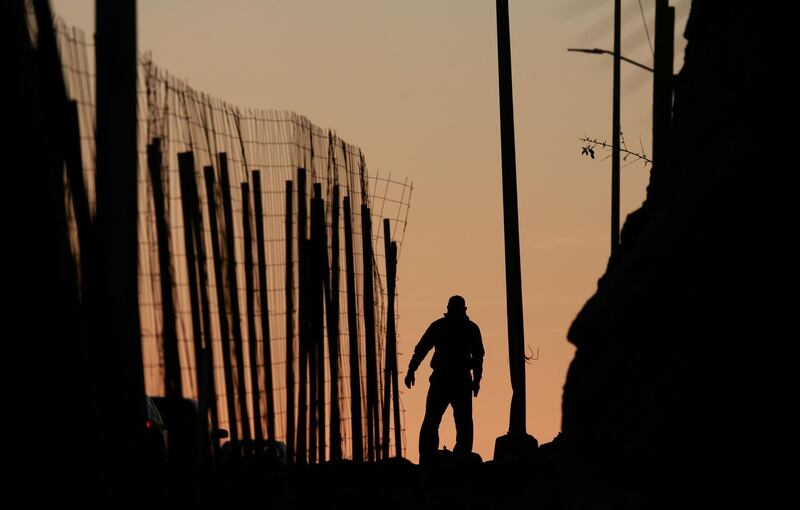The US government shutdown, now in its third week, is ostensibly over a physical wall, president Donald Trump's proposed "beautiful" border separating the US from Mexico. In reality, what Mr Trump wants to build is not just a physical structure but a state of mind. There is a German phrase for the condition: "mauer im kopf", which translates as "the wall in the head", referring to the cultural and psychological divides that persist, years after the Berlin Wall came down. As Lindsey Graham, a senator of Mr Trump's Republican party recently put it, the wall is "a metaphor". It is a symbol of the alleged security threat posed by migrants – and really, anyone foreign – to America and to its pursuit of happiness.
Thus far, most Americans aren't buying it. Last month, more than two-thirds of those polled by NPR, PBS NewsHour and the Marist Poll said they didn't think the wall a priority and certainly no reason to suspend US government operations for weeks on end. This is hardly surprising. For all Mr Trump's charged rhetoric revolving around so-called criminals, terrorists and migrants apparently sneaking into the US and disturbing the peace and rule of law, illegal border crossings from Mexico are far below the numbers seen in the 1990s and early 2000s. According to the latest statistics from US Customs and Border Protection (CBP), 396,579 undocumented people were apprehended after entering the country illegally last year – a figure considerably lower than the 1.6 million illegal crossers caught in 2000.
Yet Mr Trump’s base seems to think a physical barrier, at a cost to taxpayers of more than $25 billion, is worth it. Why?
The idea of walls can be comforting to some. Mr Trump is hardly the first leader to use the concept to alternately soothe and stir up his constituency. Recent examples of walls supposedly built to instil a sense of security include Israel’s 708-kilometre-long separation wall – also known as the “apartheid wall” – through the occupied West Bank, and Tunisia’s barrier of sandbanks and water trenches along its border with Libya. Then there was the Berlin Wall, which wasn’t meant to discourage entry of foreigners so much as the exit of East Germans.
Throughout history, there have been many examples of walls that served both a material and metaphorical purpose. Parts of the Great Wall of China – routinely described as the only man-made structure that can be seen from space – were built as far back as the 7th century BC for defence purposes and to offer protection to traders along the Silk Road. Hadrian’s Wall was erected along an 80-mile stretch in northern England in 122AD to "separate the barbarians from the Romans". The walls of Constantinople, built in the 5th century, served to deter Ottoman invaders until 1453, when the Byzantine capital fell, dealing an enormous blow to Christendom. And nearly 1,400 years ago, when the Umayyads established the first Muslim caliphate, they quickly started to construct walled enclosures in parts of the kingdom that were not urban or well-populated.
Qasr Al Hayr Al Sharqi, about 100km north-east of Palmyra and at the intersection of the main roads from Aleppo to Iraq and from the upper Euphrates to Damascus, might have been one of the first such forts. What is interesting about it is that three of the four gates in the city’s walls were immediately bricked up after construction, probably because open entry points made it seem less secure. The second point is that its exterior wall and entrance were deliberately monumental to demonstrate the wealth and power of the new Muslim empire. If that didn’t strike fear into the hearts of people with ill intentions, nothing would.
In some ways, that is exactly the kind of feeling Mr Trump wanted to inspire in American voters when he first promised a border wall on the campaign trail. But what makes his wall different is the context. It is not about warding off attack or even regulating borders. US tourist, business, student and immigrant visas follow a rigorous process before they are granted. In Ronald Reagan, America had a president who called for the tearing down of physical walls and of the ideological separation between the West and the Warsaw Pact countries. For the US, to build Mr Trump’s wall now would be regressive. As the world’s richest, most powerful country, the US is an essential part of the interlinked system of trade and mobility of goods, services, people and ideas. Building walls might serve Mr Trump's "America First" appeal to his electorate but isolationism signifies a world weariness the US simply cannot afford.





